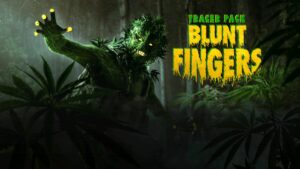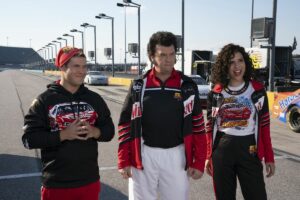In 2021, Quentin Tarantino defended his intention to make “just” 10 movies and retire, saying, “I know film history, and from here on in, directors do not get better.” That view of both artistry and film is squarely at odds with Martin Scorsese’s historic body of work. Scorsese had already made his 10th feature-length narrative film by 1986. He is now 80 years old, and his 27th, Killers of the Flower Moon, is a strong argument that directors are still capable of groundbreaking greatness late in life — and in Scorsese’s case, continued exhilarating experimentation and discovery.
Since the year 2000, Scorsese has curated a 23-year career within a career, and the quality and variety of his films have come not in spite of his age and experience, but because of it. His movies have never been more relevant than they became during the past two decades. With each subsequent release, as his career winds down, critical appreciation for him grows. Scorsese worship is the one remaining form of gerontocracy America is perfectly content with, and with good reason.
In the 21st century alone, Scorsese has made nine feature-length narrative films: Gangs of New York, The Aviator, The Departed, Shutter Island, Hugo, The Wolf of Wall Street, Silence, The Irishman, and now, Killers of the Flower Moon. His stretch from 1976’s Taxi Driver through 1990’s Goodfellas is still his peak run, the films that defined his style and his perspective. But decades from now, the nine features he’s made since 2000 won’t be looked back on as half-baked, indulgent afterthoughts from a diminished artist who lost his fastball, a fate some great auteurs suffer in old age. Instead, it’s a fertile, vital body of work, virtuosic in entirely new ways, and as important in contextualizing his greatness as all the incredible work that preceded it.
Old classics
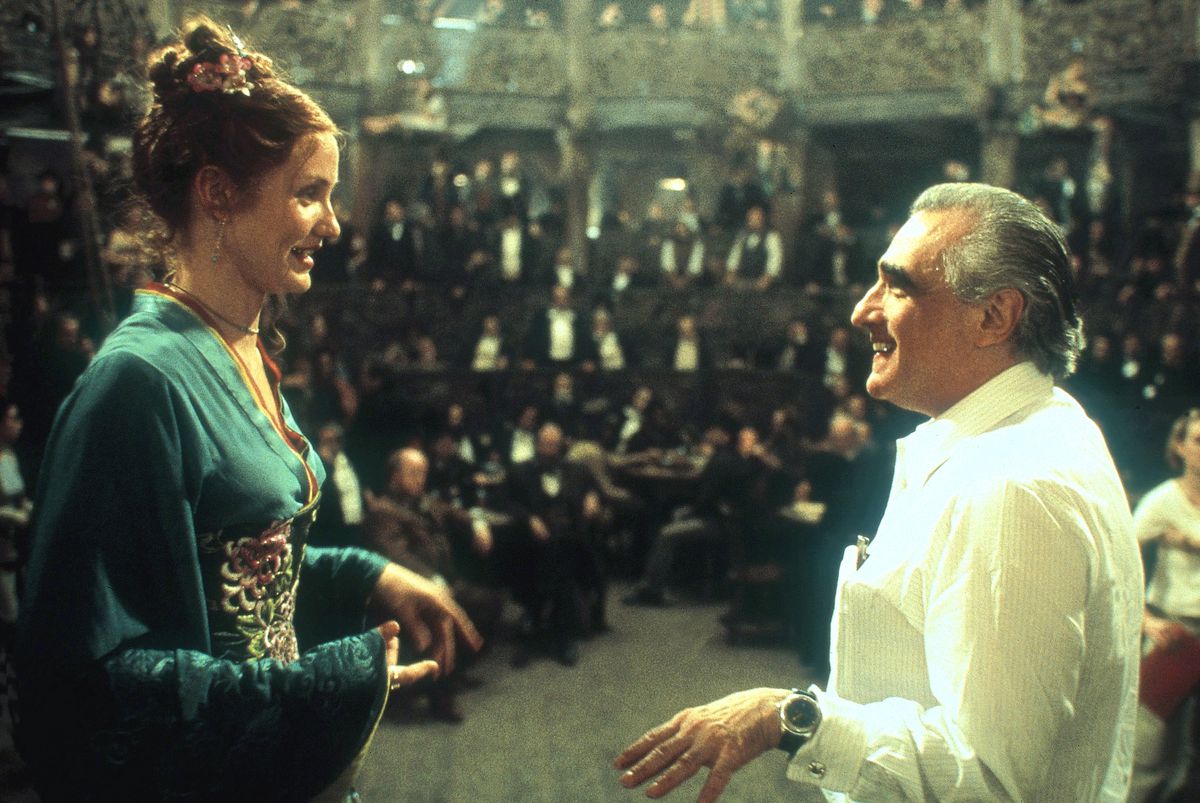
Some of those nine movies are long-gestating bucket-list triumphs revisiting the pet subjects that defined Scorsese’s oeuvre in the 20th century, often directly commenting on work from the front half of his career. 2002’s Gangs of New York, about how organized crime was woven into the operation of Scorsese’s native city from its inception, is a prequel (or ancestor) to his classics Goodfellas and Casino. 2019’s The Irishman, about a man aging and dying with his guilt and sins unresolved at the end of a life of crime, is intended as a bookend to his crime trilogy with Robert De Niro and Joe Pesci. 2016’s Silence is in conversation with, if not a synthesis of, the ideas explored in The Last Temptation of Christ and Kundun; all three are searching, anti-commercial religious films Scorsese struggled for years to get made.
In all Scorsese’s late-period films (along with the passel of rock documentaries he’s made during this era, including his two on Bob Dylan and one on George Harrison), Scorsese is consciously returning to certain pet subjects and periods in his work — not to repeat himself, but to revise and add greater perspective. There’s a sense that he’s trying to adjust his positions with the clear eye of an older person who has seen more of the world, dropped his pretensions, and lost his capacity for bullshit. His later films return to his old themes and obsessions, but in the process, they’ve become more contemplative.
New tricks
:no_upscale()/cdn.vox-cdn.com/uploads/chorus_asset/file/25026116/MCDHUGO_EC029.jpg)
This era has included some radical departures for Scorsese as well. 2004’s The Aviator is his most conventional movie to date, the most traditional, Oscar-baity, Old Hollywood biography he’s made. It’s best understood as a director-for-hire palate-cleanser after Scorsese completed the odyssey of making the perpetually troubled Gangs of New York. 2010’s Shutter Island is horror and suspense, an expert exercise in pure genre, part Hammer Films and part Alfred Hitchcock. It also contains some of the most inventive, moving, and painterly visuals he’s ever committed to film.
And 2011’s Hugo is perhaps the hardest Scorsese film to imagine a younger Scorsese making. It’s a 3D Robert Zemeckis-style family film that’s also about the end of life and about immortality in art. Scorsese made the film as a love letter to Georges Méliès, Harold Lloyd, and his own then-12-year-old daughter, Francesca. It’s a project seemingly designed to remind fathers of all the times they tried to introduce their kids to their favorite old films. Hugo is explicitly about Scorsese’s legendary cinephilia in a way his films that came before it are not, and it’s sentimental in a way his work has never been before or since.
New life

2002’s Gangs of New York was the final product of an interesting but ultimately flawed compromise between Scorsese and producer Harvey Weinstein. But the film retains significance because it’s the beginning of the defining relationship in this portion of Scorsese’s career, with Leonardo DiCaprio. It was a symbiotic partnership that elevated both men: the industry outsider who needed a safe box-office bet to finally get his epic, expensive dream projects financed, and the teen heartthrob who needed an auteur with arthouse gravitas to take him seriously so the industry would.
To date, the project has been wildly successful, producing six films over 21 years. The first five (Gangs of New York, The Aviator, The Departed, Shutter Island, The Wolf of Wall Street) are Scorsese’s top five highest-grossing films, with the box office for Killers incoming. Over the years, the Scorsese-DiCaprio team-up has served as a true creative marriage. The two men now share a manager in Rick Yorn, the man responsible for discovering DiCaprio. It’s evidence DiCaprio hasn’t “just” been a muse and face on the posters; he’s had a say in deciding what projects Scorsese has taken on, and has even made significant decisions in shaping Scorsese’s stories. (Scorsese entirely reimagined Killers of the Flower Moon after DiCaprio offered notes on an early draft of the script, including shifting focus to a different main character and moving DiCaprio into that role.)
For certain older filmmakers — say, Clint Eastwood — aging has meant settling for more routine and less challenging stories and shots, on a tight production schedule. Scorsese went in the other direction. From the outside, The Departed appears to be a cynical, domestic remake of a Hong Kong cops-and-robbers shootout. But Scorsese makes it his own and breathes bizarre life and energy into it. It contains the continuity errors, quick cutting, both rhythmic and arrhythmic needle bombs, and goofball humor his movies hadn’t featured since Goodfellas. That film essentially birthed an entire genre of filmic language, but The Departed goes a step beyond the original. It was constantly being rewritten and adjusted with the actors on the fly. The result was exhilarating seat-of-the-pants filmmaking that Scorsese and his longtime creative partner, editor Thelma Schoonmaker, wrangled into a coherent film.
Scorsese brought this cokey, maximalist energy to The Wolf of Wall Street, a pointed comedy as wildly, masterfully off the rails and improvisational as anything he’s ever done. (Jonah Hill perhaps smuggled in a touch of Judd Apatow’s “Keep the camera rolling” ethos.) You can feel a healthy dose of Scorsese’s established-filmmaker confidence (and a touch of “Eh, why not? Fuck it!” thinking) as DiCaprio’s Ferrari changes color mid-narration during a highway blowjob, and when DiCaprio addresses the camera directly, urging the audience not to worry about specific plot points. It’s an absolute miracle Scorsese and Schoonmaker manage to produce a masterpiece out of the chaotic pieces of this production process (again in post, with ample voice-over). Everyone is letting loose, and to hear the actors and the director describe the shoot after the fact, it takes on something of a religious quality, with Scorsese as the wrinkled shaman handing out the peyote.
What grounds it is the framing. Scorsese is telling us a familiar story we’ve come to expect from him, about criminals and the pleasure they take in committing crimes and reaping the benefits. The brilliance is the way he mines filmgoers’ long relationship with his work, repurposing the style and tone of his gangster classics and inserting it into the world of finance. As he’s done effectively since Casino, Scorsese weaponizes postmodernism, using viewers’ presumed existing familiarity with his films as context. You don’t get the full gale force of this film, its pleasures and its overarching point, without Scorsese reaching back to his past work, and relying on viewers to recognize his voice in the storytelling.
Killers of the Flower Moon
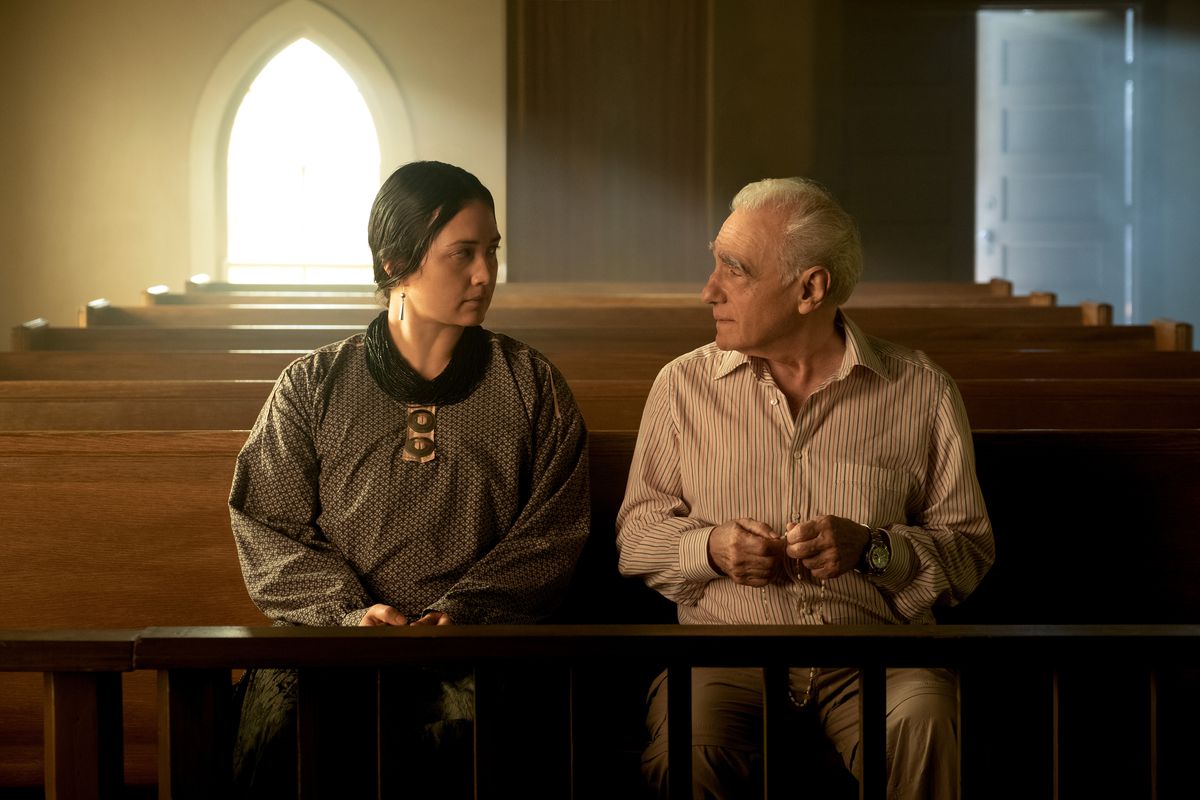
Killers of the Flower Moon is perhaps most closely related to The Aviator as a film that appears to be a recognizable, industry-friendly form of awards-season prestige. It’s also a return to Scorsese’s core themes and characters. It’s another cast of avarice-fueled, violent white American dumbasses gaining ill-gotten wealth and making the country incrementally worse. It’s again about those men failing up, consolidating power, and shading the country more evil.
Killers adapts a major literary work of historical true crime from a New Yorker writer. The book delves into an obscure but monstrous historical incident that is a cosmic truth in miniature, an evil that speaks to the heart of the entire dark American project. On screen, it’s Scorsese’s first true Western, filled with gorgeous vistas and Oklahoma horizons that would bring a tear to the eye of John Ford, one of Scorsese’s many idols.
But the film is much stranger than it sounds on paper. Scorsese’s take on the material largely operates outside the text, centering the story on a peripheral character we know little about from David Grann’s book. Miraculously, the film also has its funny elements, incorporating The Departed and The Wolf of Wall Street’s nervy energy, featuring long and zany improvisational exchanges on grim subject matter, sudden wild swings in tone, and one major decision that should spark more debate and differences of opinion than any narrative device Scorsese has ever employed. It’s a suspenseful, moving film with many brilliant parts.
Killers is a classic Scorsese Catholic reckoning. This time, the director is concerned with white supremacy and systemic racism, full of unsparing and punishing conclusions and self recriminations in the wake of George Floyd’s death and the 2020 protests. (In a press conference on Oct. 16, Scorsese described the film as “a story of complicity, a story of sin by omission.”)
Scorsese is expressing guilt and culpability as a beneficiary of this inequality. In the movie’s closing minutes, he literally puts himself squarely in the frame. That’s a level of awareness that goes beyond the introverted morality plays he grappled with earlier in his career: It’s a mature framing of the individual, and the responsibilities we have toward one another, on a societal scale.
In a charitable light, adding himself to the movie as the voice of its final reckoning is a bold statement of accountability. In an uncharitable light, it plays as performative, as an older relative getting worked up over a police brutality Facebook post. It’s too early to decide how this film tags into our present historical moment, or how it will be remembered. We all have many viewings of and conversations about Killers of the Flower Moon ahead of us.
A true master
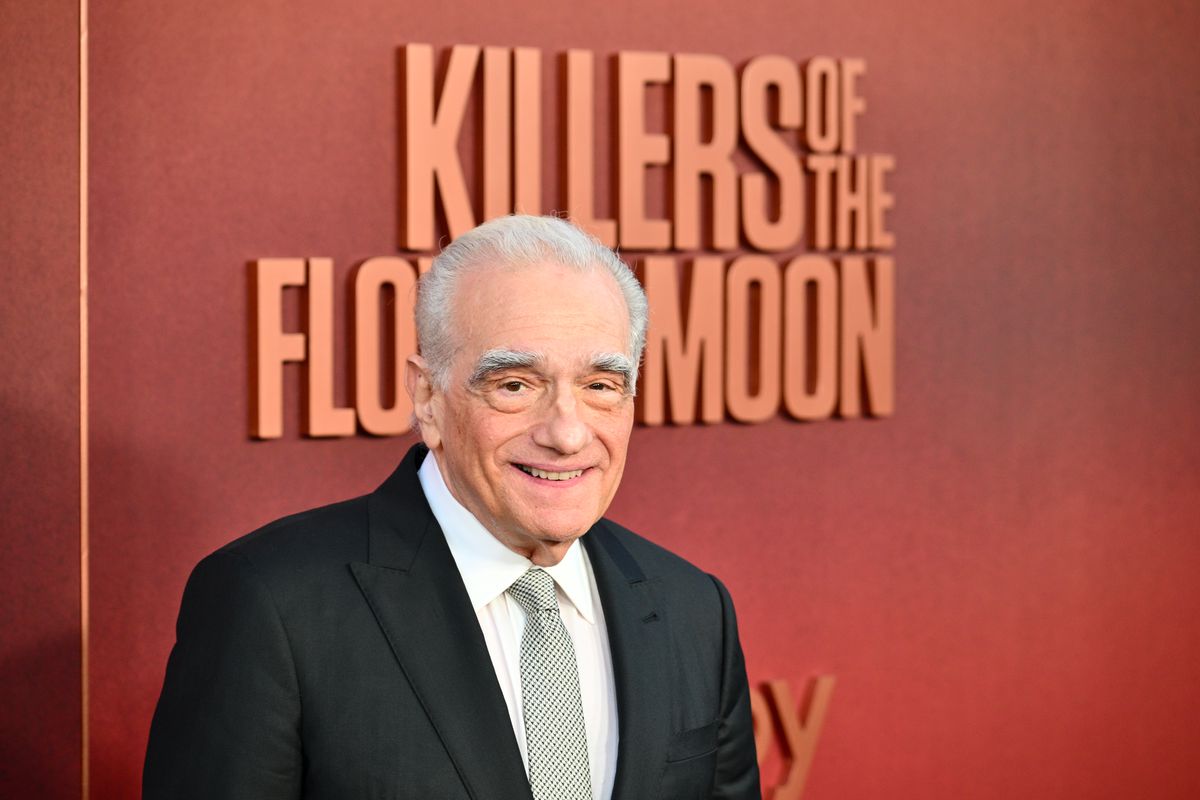
This century has seen Scorsese zigging and zagging as always, but because he’s following his own varied interests, not because he’s moving from compromise to compromise, as he once had to in order to continue working. An artist who spent the first 30 years of his career desperate for autonomy finally got it, and now he’s taking full advantage: telling difficult stories, setting his own mega-budgets, and demanding every minute of run time he feels each picture demands.
He’s used this autonomy to revisit his work and revise the record, creating great new films as well as adding crucial addendums to past work. He’s blazing new trails and adding new layers to his style. Remarkably, getting the control that eluded him when he was younger has made his films more consistently collaborative and creative, more fluid and alive than he was often allowed to be prior to the 2000s. He has the earned confidence of an artist who has spent a lifetime in film and knows he’ll be able to find something great in post. His late period has only added to his legend. That should give Tarantino cause to reconsider — alongside any artist or critic who thinks the creative spark has an expiration date.
- SEO Powered Content & PR Distribution. Get Amplified Today.
- PlatoData.Network Vertical Generative Ai. Empower Yourself. Access Here.
- PlatoAiStream. Web3 Intelligence. Knowledge Amplified. Access Here.
- PlatoESG. Carbon, CleanTech, Energy, Environment, Solar, Waste Management. Access Here.
- PlatoHealth. Biotech and Clinical Trials Intelligence. Access Here.
- Source: https://www.polygon.com/23929489/martin-scorsese-best-movies-killers-flower-moon-career
- :has
- :is
- :not
- $UP
- 10
- 10th
- 16
- 2000
- 2020
- 2021
- 20th
- 21st
- 27th
- 30
- 3d
- 80
- a
- Able
- About
- Absolute
- accountability
- actors
- add
- added
- adding
- addresses
- adjust
- Adjusted
- ADvantage
- After
- again
- age
- Aging
- ahead
- alive
- All
- allowed
- alone
- along
- alongside
- already
- also
- always
- Amazon
- america
- American
- an
- and
- Angeles
- Another
- any
- anything
- appears
- appreciation
- ARE
- argument
- Art
- artist
- artistry
- AS
- ASA
- At
- audience
- awareness
- back
- background
- backs
- BE
- became
- because
- become
- been
- before
- Beginning
- behind
- behind the scenes
- being
- beneficiary
- benefits
- BEST
- Bet
- Better
- between
- Beyond
- Black
- BLAZING
- body
- bold
- book
- both
- Box
- box office
- brilliant
- bring
- brought
- but
- by
- came
- camera
- CAN
- capable
- Capacity
- Career
- carpet
- case
- Cause
- centering
- Century
- certain
- challenging
- Changes
- character
- characters
- child
- church
- City
- classic
- classics
- clear
- closely
- closing
- CO
- COHERENT
- collaborative
- color
- come
- Comedy
- Commenting
- committed
- committing
- Completed
- complicity
- compromise
- concerned
- Conference
- confidence
- consistently
- consolidating
- contains
- content
- context
- continue
- continued
- control
- conventional
- Conversation
- conversations
- Core
- country
- Creating
- Creative
- Crime
- Crimes
- Criminals
- critical
- crucial
- curated
- cutting
- Dark
- Date
- David
- Death
- debate
- decades
- decide
- Deciding
- decisions
- defined
- defining
- demanding
- demands
- departures
- described
- designed
- device
- differences
- different
- difficult
- direction
- directly
- Director
- Directors
- discovering
- discovery
- do
- documentaries
- Domestic
- done
- Dont
- dose
- down
- draft
- drawn
- dream
- dropped
- during
- Dying
- each
- Earlier
- Early
- earned
- editor
- effectively
- elements
- elevated
- employed
- end
- energy
- Entire
- entirely
- EPIC
- Era
- essentially
- Ether (ETH)
- Even
- EVER
- Every
- everyone
- evidence
- Exchanges
- Exercise
- exhilarating
- existing
- expect
- expensive
- experience
- expert
- expiration
- explicitly
- Explored
- eye
- Face
- failing
- Falling
- familiar
- Familiarity
- family
- fate
- Favorite
- featured
- Features
- Featuring
- feel
- Ferrari
- Figure
- filled
- Film
- filmmakers
- filmmaking
- films
- final
- Finally
- finance
- financed
- Find
- First
- five
- flawed
- flower
- fluid
- Focus
- following
- For
- Force
- Ford
- form
- FRAME
- from
- front
- full
- funny
- gaining
- genre
- George
- get
- getting
- Give
- Goes
- good
- got
- great
- greater
- grim
- groundbreaking
- Grows
- had
- Hair
- Half
- harold
- Have
- he
- healthy
- hear
- Heart
- here
- highest-grossing
- Highway
- him
- his
- historic
- historical
- history
- holds
- Hollywood
- Hong
- Hong Kong
- Horizons
- horror
- How
- HTML
- HTTPS
- hugo
- Humor
- ideas
- if
- image
- imagine
- important
- in
- inception
- included
- Including
- Incoming
- incorporating
- incredible
- independent
- individual
- industry
- Inequality
- instead
- intended
- Intention
- interesting
- interests
- into
- introduce
- IT
- ITS
- joe
- John
- jonah
- Jordan
- jordan belfort
- jpg
- kids
- killers
- Know
- knows
- Kong
- language
- largely
- Last
- Late
- later
- layers
- legendary
- less
- letter
- letting
- Level
- Life
- lifetime
- light
- little
- Long
- looked
- los
- Los Angeles
- lost
- love
- made
- Main
- major
- make
- MAKES
- Making
- man
- manage
- many
- Martin
- masterpiece
- material
- Matter
- mature
- maximalist
- meant
- Men
- Michael
- mines
- minute
- minutes
- miracle
- moment
- Moon
- morality
- more
- most
- movie
- Movies
- moving
- much
- MUSE
- NARRATIVE
- native
- needed
- never
- New
- New York
- nine
- Notes
- now
- Oct
- Odds
- of
- off
- offered
- Office
- often
- Oklahoma
- Old
- older
- on
- once
- ONE
- only
- open
- operates
- operation
- Opinion
- opposite
- or
- order
- Organized
- original
- Other
- our
- out
- outside
- over
- overarching
- own
- Paper
- part
- partner
- Partnership
- parts
- past
- Peak
- perfectly
- perhaps
- period
- periods
- peripheral
- person
- perspective
- pet
- PHP
- picture
- pieces
- plato
- Plato Data Intelligence
- PlatoData
- plays
- pleasure
- Point
- points
- Police
- Polygon
- positions
- Post
- posters
- power
- Premiere
- present
- press
- Prestige
- Prior
- process
- produce
- producer
- producing
- Product
- Production
- project
- projects
- proves
- Puts
- quality
- Quentin Tarantino
- Quick
- racism
- radical
- rails
- reaching
- reaping
- reason
- recognize
- reconsider
- record
- Red
- reimagined
- related
- relationship
- relative
- release
- relevant
- relying
- remaining
- repeat
- responsibilities
- responsible
- result
- retains
- return
- returning
- revise
- ROBERT
- Rock
- Role
- Room
- routine
- Run
- safe
- say
- saying
- Scale
- scenes
- schedule
- Screen
- script
- searching
- Second
- seen
- SELF
- sense
- seriously
- set
- setting
- settling
- shaping
- Share
- SHIFTING
- Shoot
- shot
- shots
- should
- show
- sign
- significance
- significant
- since
- sit
- Sitting
- SIX
- So
- societal
- some
- something
- Space
- Spark
- speak
- Speaks
- specific
- spent
- Spite
- Sponsored
- stands
- Statement
- Step
- Still
- Stories
- Story
- storytelling
- stranger
- street
- strong
- style
- subject
- subsequent
- successful
- sudden
- sue
- Suit
- Swings
- Symbiotic
- synthesis
- systemic
- Take
- taken
- takes
- taking
- Tarantino
- teen
- telling
- text
- than
- that
- The
- the world
- their
- themes
- they
- Thinking
- Thinks
- this
- those
- three
- Through
- TIE
- tiktok
- time
- times
- Title
- to
- together
- TONE
- too
- touch
- toward
- traditional
- tried
- true
- truth
- trying
- two
- Ultimately
- understood
- urging
- us
- used
- using
- variety
- via
- View
- viewers
- visible
- visuals
- vital
- Voice
- Wake
- Wall
- Wall Street
- was
- Way..
- ways
- we
- Wealth
- webp
- WELL
- went
- Western
- What
- when
- white
- WHO
- why
- Wikipedia
- Wild
- will
- winds
- with
- within
- without
- Wolf
- wolf of wall street
- wooden
- Work
- worked
- working
- world
- worry
- worse
- would
- woven
- writer
- Wrong
- year
- years
- york
- you
- Younger
- youtube
- zephyrnet





